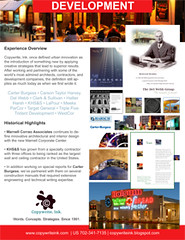Without considering the philosophical questions, perception and reality are the same in the marketing world. Sometimes that's a good thing. Sometimes it's not.
As such, the old adage that ''any publicity is good publicity'' is dead wrong and the primary reason has to do with brand value.
The Brand Channel recently asked if a brand hopes to cash in on the allure of a star athlete, does it also suffer when that athlete is caught in a misadventure off the playing field? While several comments offer up answers on both sides of the argument, Tiger Woods provides the best answer of all.
Recently, he lashed out at an Irish magazine for falsely linking his Swedish wife Elin, a former model, to pornographic websites.
"It's unacceptable and I don't want it to detract from the beauty of this event," he told a news conference on Wednesday in the build-up to this week's Ryder Cup at the K Club in County Kildare, according to Reuters. "I am very disappointed in how the article was written. Yes, my wife has been a model and she did do some bikini photos but to link her to porn websites and such is unacceptable. I do not accept it and neither does our team."
The latest edition of the Dubliner, a listings magazine, carries bogus nude pictures of Elin, as well as a story on some of the U.S. Ryder Cup wives headlined 'Ryder Cup filth for Ireland'.
Part of the article read: "Most American golfers are married to women who cannot keep their clothes on in public. Is it too much to ask that they leave them at home for the Ryder Cup?"
"My wife is an extension of me. We're in it together, we're a team and I care about her with all my heart," Tiger said.
While any brand damage will be short lived and I suspect Tiger Woods will easily overcome the bogus charges, the perception generated by the publication did cause temporary brand damage in that it disparaged his image (even though the false charges were directed as his wife, because as he said, she is an extension of him).
Fortunately, his excellent handling of the negative publicity will help him in the long term, despite the fact that it distracted from his upcoming play and personal brand.
But what if he didn't handle the situation well? Then what?
His image, or personal brand, would have been damaged whether or not the charges were not true. Nice upstanding athletes do not marry porn stars, and if they do, they're not good role models. Nice upstanding athletes are also expected to keep their cool, even when their wives are falsely linked to porn sites. (Unless, of course, their brand is to fly off the handle. Then, that's what we would expect.)
All this is pretty unfair, but that's the way it goes when it comes to public perception. True or not, all publicity can have a positive or negative effect on the personal brand of the athlete and the products they endorse (or vice versa).
But that is what a brand really is: the collective sum of all positive or negative impressions shared by all people, whether or not those impressions were made by fiction or reality.
As such, the old adage that ''any publicity is good publicity'' is dead wrong and the primary reason has to do with brand value.
The Brand Channel recently asked if a brand hopes to cash in on the allure of a star athlete, does it also suffer when that athlete is caught in a misadventure off the playing field? While several comments offer up answers on both sides of the argument, Tiger Woods provides the best answer of all.
Recently, he lashed out at an Irish magazine for falsely linking his Swedish wife Elin, a former model, to pornographic websites.
"It's unacceptable and I don't want it to detract from the beauty of this event," he told a news conference on Wednesday in the build-up to this week's Ryder Cup at the K Club in County Kildare, according to Reuters. "I am very disappointed in how the article was written. Yes, my wife has been a model and she did do some bikini photos but to link her to porn websites and such is unacceptable. I do not accept it and neither does our team."
The latest edition of the Dubliner, a listings magazine, carries bogus nude pictures of Elin, as well as a story on some of the U.S. Ryder Cup wives headlined 'Ryder Cup filth for Ireland'.
Part of the article read: "Most American golfers are married to women who cannot keep their clothes on in public. Is it too much to ask that they leave them at home for the Ryder Cup?"
"My wife is an extension of me. We're in it together, we're a team and I care about her with all my heart," Tiger said.
While any brand damage will be short lived and I suspect Tiger Woods will easily overcome the bogus charges, the perception generated by the publication did cause temporary brand damage in that it disparaged his image (even though the false charges were directed as his wife, because as he said, she is an extension of him).
Fortunately, his excellent handling of the negative publicity will help him in the long term, despite the fact that it distracted from his upcoming play and personal brand.
But what if he didn't handle the situation well? Then what?
His image, or personal brand, would have been damaged whether or not the charges were not true. Nice upstanding athletes do not marry porn stars, and if they do, they're not good role models. Nice upstanding athletes are also expected to keep their cool, even when their wives are falsely linked to porn sites. (Unless, of course, their brand is to fly off the handle. Then, that's what we would expect.)
All this is pretty unfair, but that's the way it goes when it comes to public perception. True or not, all publicity can have a positive or negative effect on the personal brand of the athlete and the products they endorse (or vice versa).
But that is what a brand really is: the collective sum of all positive or negative impressions shared by all people, whether or not those impressions were made by fiction or reality.



















